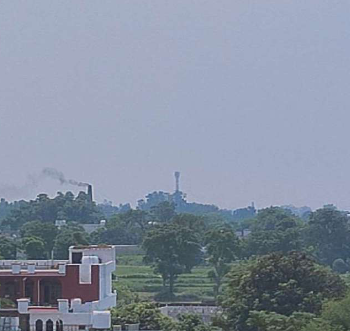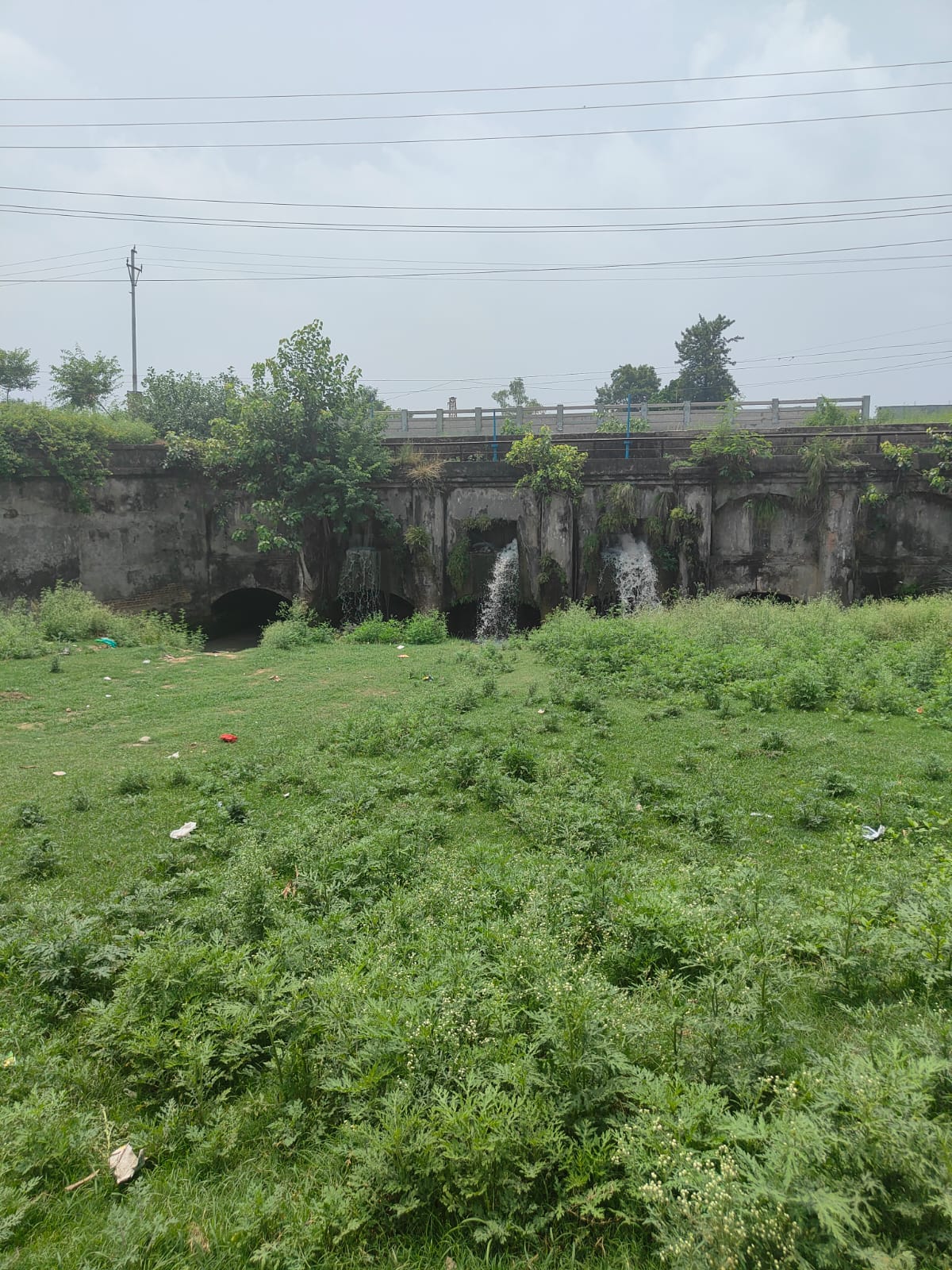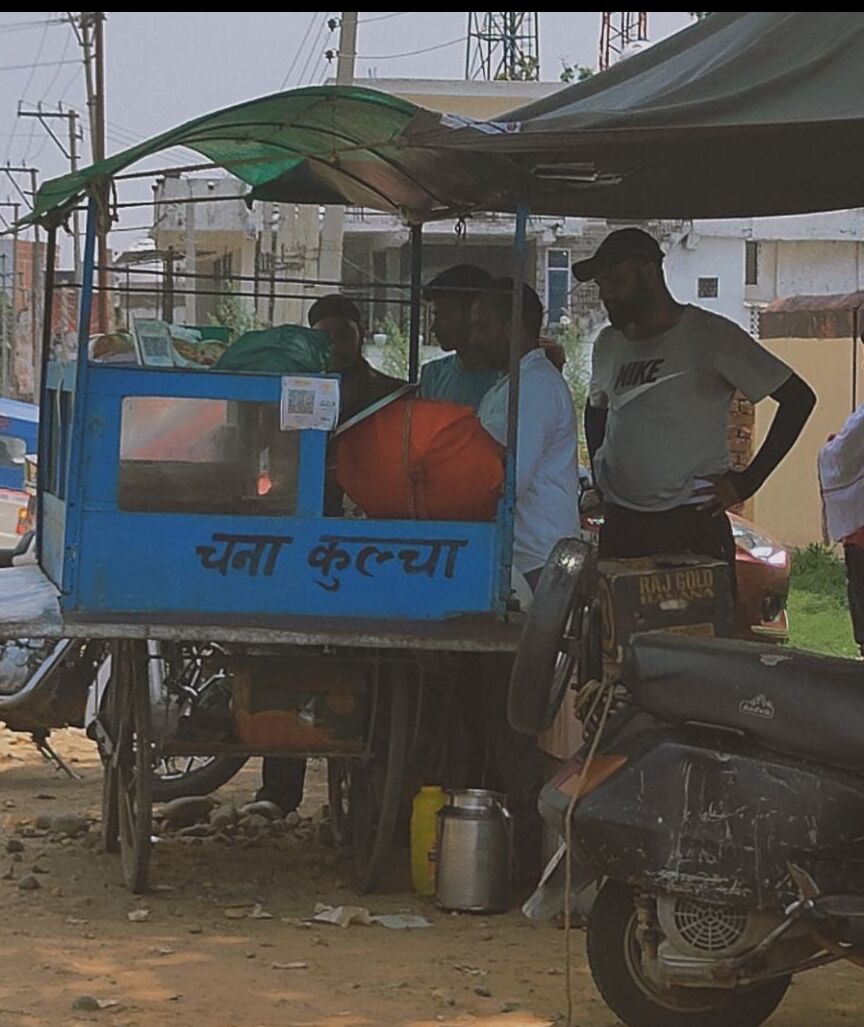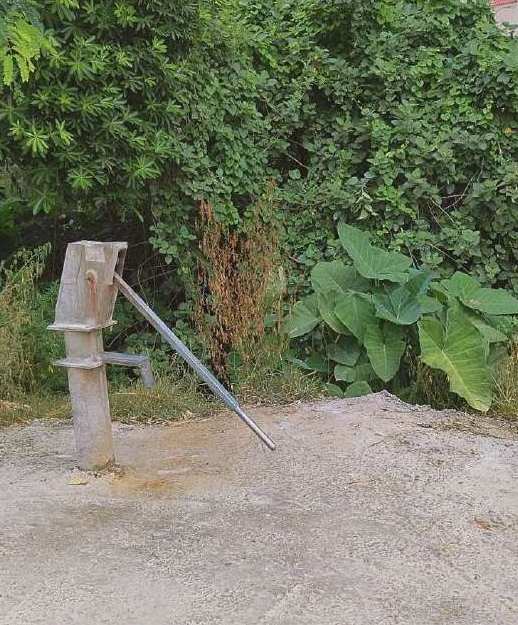Description
Geographic Location and Brief History of the Village
Domana is strategically located in the Jammu district of Jammu and Kashmir, positioned at coordinates 32.7174° N latitude and 74.8574° E longitude.
Domana, with its rich historical tapestry, traces its origins back to the early 19th century. Officially founded in 1825, the village emerged during a period of significant regional development. Initially, Domana functioned as a vital trade town due to its strategic location along key trade routes connecting different parts of the region. In the aftermath of the partition of India in 1947, Domana saw an influx of migrants from Pakistan. The name 'Domana' is believed to derive from the local Dogri language, where 'Dom' signifies 'land' and 'ana' means 'gifted,' reflecting the village's fertile land and its significance to the local inhabitants. Enhancing its agricultural productivity, the nearby Ranbir Canal has historically supported irrigation and contributed to the area's prosperity.
Population and Cultural Heritage of the Village
The current population of the Village is 4817.The languages spoken in the village is mainly Dogri.
The Ranbir Canal, an esteemed part of our cultural heritage, has significantly influenced the settlement patterns in the Domana region. Built in 1905 by the Maharaja of Jammu and Kashmir, this canal and its distributaries have played a vital role in supporting local agriculture and fostering community growth.
The distributary running through Domana has been particularly important in enhancing irrigation, which has in turn supported the expansion of the local population and agricultural development.
In addition to its historical significance, Domana is known for its vibrant cultural celebrations. The annual Gurpurab of Guru Arjan Dev Ji, a key event for the local Sikh community, is celebrated with great devotion and festivity. This important occasion honors the teachings and legacy of the fifth Sikh Guru.
Nearby, the village hosts the Daya and Jhuiddi Mela, a lively fair that brings together people from surrounding areas. This traditional mela is a highlight of the local cultural calendar, featuring various activities, stalls, and communal gatherings.
Another notable landmark in Domana is Machine Domana, named after a crop-cutting machine installed for the benefit of neighboring villages. This installation represents the region's commitment to agricultural advancement and highlights ongoing efforts to improve local farming practices.
Main Attractions of the Village
Domana boasts several notable attractions reflecting its natural beauty, historical significance, and cultural heritage:
Natural Scenery Majestic Mango and Falsa Trees: Renowned for lush mango orchards and unique falsa trees, showcasing the village's rich agricultural heritage. Fertile Farmlands: Used for cultivating rice and other crops, contributing to the picturesque rural landscape.
Historical Sites Local Gurudwara: A spiritual center where the Gurupurab of Guru Arjan Dev Ji is celebrated annually on June 16th with prayers, hymns, and a communal Langar. Traditional Meeting Spots: Historic mango trees served as gathering places for panchayat meetings before modem buildings were constructed.
Foji Sua Historical Significance: A small tributary of the Ranbir Canal, named after a local soldier who contributed to the village's history. It serves as an important irrigation source and reflects the village's water management heritage.
Engaging Experiences and Best Time to visit
Domana offers several engaging experiences for visitors:
Brick Factory Tours Overview: Guided tours provide insight into traditional brick-making, including raw material preparation, molding. drying, and firing processes. Learn about the factory's historical significance and community impact.
Panchayat Ghar Visits Overview: Explore the administrative heart of Domana. While not formal tours, the Sarpanch and officials are available to discuss village governance, history, and community initiatives. Self-
Guided Visits Gurudwara Visits: Experience the spiritual atmosphere of the local Gurudwara, participate in community prayers and Langar, and learn about its role in local practices. Temple Visits: Visit the temple near the Panchayat Ghar to observe local worship practices and appreciate Domana's spiritual traditions. Foji Sua: Relax by dipping your feet in the cool waters of Foji Sua, a small tributary of the Ranbir Canal, and enjoy the serene natural surroundings.
Spring (March to May): Spring is arguably the most pleasant time to visit Domana, with mild temperatures and blooming flora enhancing the village's natural beauty. This season is ideal for exploring the lush fields, vibrant mango orchards, and picturesque landscapes. The arrival of spring also coincides with the Rahre Festival, a significant cultural event that marks the beginning of the agricultural season with traditional rituals. and celebrations, During your visit, you can also take the opportunity to dip your feet in the Ranbir distributary, a refreshing experience that connects you with the region's agricultural heritage. The cool, clear waters provide a delightful way to enjoy the scenic surroundings and relax after a day of exploring.
Local accommodations
Domana offers several charming guest houses and homestays, providing a cozy and authentic.
These accommodations are often run by local families, allowing visitors to immerse themselves in the daily life of the community.
Features: These guest houses typically offer basic amenities, including comfortable rooms, home-cooked meals, and personalized service. Staying with a local host can also provide valuable insights into village life and customs.
Guest Houses and Homestays Example:
Malik villa
Features: Provides a cozy and authentic stay with comfortable rooms and home-cooked meals. Guests have the opportunity to interact with local families and gain insights into village life and traditions.
Famous Local Dishes
Maani, is a very famous popular and beloved mango-based enjoyed dish in Domana. This sweet, mango-based treat is cherished for its rich, fruity flavor and is a must-try for visitors.
Kadi Rice A comforting dish of rice and tangy yogurt-based curry, seasoned with spices and herbs, making it a flavorful staple in the local cuisine.
Kulchas are a local favorite in Domana, known for their soft, fluffy texture and versatility. Two standout dishes are:
Kulcha Tikki: Crispy, spiced potato patties served with soft kulcha bread, complemented by special chutneys.
Nutri Kulcha: Crunchy chickpea flour snacks paired with warm kulchas and enhanced with unique sauces and chutneys.
Gurgule are sweet, golden dough balls that are light, airy, and subtly sweet. These treats are a local favorite, often compared to similar sweets from Lakhanpur but with a distinct Domana twist.
Other Notable Dishes:
Rahre: A savory rice dish with local vegetables and aromatic spices.
Falsa: A tart fruit enjoyed on its own or in various dishes, highlighting local flavors.
Local Street Snacks: Includes Chaat and Pakoras, reflecting the vibrant street food culture.
Lifestyle, Occupations and Educational facilities
Domana offers a unique blend of traditional values and modem influences, reflecting a picturesque rural lifestyle in Jammu. The old generation are still following the rituals which are important to carry forward the rich culture however new generation is adapting the new culture which is also equally important to move on with changing society thus Domana balances tradition with modern advancements, with improvements in infrastructure and technology enharicing daily life while preserving its cultural values.
Common occupations or industries in the village
1. Agriculture: Agriculture is central to Domana's economy, with fertile lands used for growing rice and cultivating Falsa and mango trees. Farmers use a mix of traditional and modern techniques to ensure high yields.
2. Brick Making: The brick-making industry is vital in Domana, with several factories producing bricks for construction. This sector provides significant employment and supports the local economy through the clay extraction, molding, drying, and firing processes.
3. Milk Dairies: Small-scale milk dairies are a key part of the economy, supplying fresh milk and dairy products to the community. These dairies offer a crucial income source for many families.
4. Small-Scale Trade and Commerce: Local shops, markets, and street vendors cater to daily needs and contribute to the village's commercial life, supporting both essential goods and traditional items.
5. Local Craftsmanship: Artisans produce handmade goods and crafts, showcasing their work at local fairs and markets. This craftsmanship supports local incomes and preserves cultural heritage.
6. Public Sector Jobs: Residents also work in various government positions, including roles in banks, post offices, education, and healthcare, which are essential for community development.
Educational facilities available in the village
a) Domana Government School: The centerpiece of education in Domana is the Domana Government High School, a well-regarded institution within the village. This school is notable for its spacious grounds, which provide ample space for outdoor activities and sports. It boasts a well-equipped library and modern laboratories that support a range of scientific and technical studies. The school's infrastructure is impressive, featuring well-maintained classrooms and lecture halls that are comparable to those found in private. institutions. The teachers are dedicated and skilled, contributing to a high standard of education. Unlike many government schools in urban areas, Domana Government School stands out for its quality facilities and positive learning environment
b)Domana army school domana
c)Other private academies
Educational Programs Available for Children and Adults
Community Seminars and Debates: Government schools in Domana regularly host poster competitions, seminars, and debates focusing on social issues such as drug abuse and anti-tobacco awareness. These events are designed to educate and engage adults in important societal topics.
Skill Development Courses: Various skill development programs are offered through local organizations and government initiatives. These courses cover practical skills such as tailoring, carpentry, and computer literacy, aimed at enhancing employability and personal growth.
Educational Policy Support: New Education Policy 2020: Under the New Education Policy 2020, there is a focus on enhancing educational quality and providing resources for teachers. Apps like DIKSHA and SAMIKSHA are utilized for teacher upskilling and professional development. These platforms offer online resources, training modules, and educational tools to help teachers improve their skills and deliver better education. These efforts reflect a commitment to adult education and skill development in Domana, fostering continuous learning
and personal advancement.
Industrial Training Institute (ITI): Students from Domana attend the nearby Industrial Training Institute (ITI) located on Jammu-Akhnoor Road. The ITI offers various vocational courses and skill development programs
Encouragement Beyond 12th Grade: Students in government schools are actively encouraged to pursue education beyond the 12th grade. Teachers and school staff promote the importance of higher education and support students in exploring opportunities for further studies.
Educational Workshops: Schools organize workshops and seminars on higher education opportunities, including information about colleges, universities, and vocational training institutes.
Application Assistance: Students receive assistance with college applications, scholarship opportunities, and entrance exams, ensuring they are well-prepared for higher education. Scholarship
Awareness: Information about available scholarships and financial aid is shared with students to
Conservation Efforts to Protect the Natural & Historical Aspects of the Village
Although the Ranbir Canal and its distributary are not officially designated tourist spots, they attract passersby travelling on the Jammu-Akhnoor road and locals who enjoy leisurely walks along the canal's chilled waters. To preserve and enhance the beauty of this waterway, several measures are in place:
Prevention of Pollution:
No Sewage Dumping: The Gram Panchayat and local residents are committed to ensuring that no household sewage is dumped into the canal. This measure helps maintain the water quality and prevents pollution.
Annual Maintenance: Irrigation Department's Role: The Department of Irrigation undertakes annual maintenance of the Ranbir Canal as part of the Blue and Green Project. This project focuses on: Cleaning and Desilting: Regular cleaning and desilting operations to remove debris and sediment buildup.
Infrastructure Repairs: Ensuring that canal infrastructure, such as banks and channels, is in good repair to support efficient water flow and reduce erosion.
Community Involvement: Local Awareness: Residents are encouraged to participate in keeping the canal clean and to report any pollution or maintenance issues.
Panchayat Engagement: The Gram Panchayat plays a proactive role in implementing and enforcing policies related to waste management and canal upkeep. These efforts collectively ensure that the Ranbir Canal and its distributary remain a beautiful and clean area for both locals and visitors, contributing to the overall sustainability and health of the local environment.
Afforestation and Soil Conservation Efforts Afforestation Initiatives:Brick kilns pose a risk of soil erosion due to their operations.The Gram Panchayat has mandated brick kiln owners to engage in afforestation activities. The goal is to plant more trees to prevent soil erosion and stabilize the soil.
Winter Desilting Activities: Every year during winter. desilting is performed on the Ranbir Canal and its tributaries.The desilting process helps maintain the water flow and reduces the risk of sediment build-up, which could affect water management and increase erosion.
Transportation
One can reach the village by:
-Road Private Vehicles: Accessible via well-maintained roads from major cities or nearby towns.
-Matedoors: Local auto-rickshaws or three-wheelers for short-distance travel within the region.
-Small Buses: Frequent local mini-buses or vans connect the village with nearby towns. Electric Buses: Eco-friendly electric buses may be available for a sustainable travel option.
Within the village, various transportation options are available:
-Tanga (Horse Cart) Usage: Traditional horse-drawn cart for short trips, transporting goods, or a leisurely experience. Experience: Offers a scenic, cultural touch to explore the village.
-Auto-Rickshaws Usage: Small motorized vehicles for short to medium distances, suitable for individuals or small groups, Benefits: Quick, affordable, and navigates narrow roads easily.
-Cycles Usage: Bicycles for personal transportation, ideal for short distances and a healthy travel option
Healthcare
Healthcare facilities typically include a range of options to address the health needs of residents.
Primary Health Center (PHC) Services: Provides basic medical services, including general health check-ups, immunizations, and treatment for common illnesses. Staff: Usually staffed by general practitioners, nurses, and sometimes a pharmacist.
Community Health Clinics Services: Local clinics offering outpatient services, preventive care, and basic treatments. Specialties: May include services such as dental care, eye care, and minor surgical procedures.
Flora & Fauna, Annual Affairs & Community-led Initiatives
1.Baisakhi Mela: An annual fair celebrated on the eve of Baisakhi, Features local arts, music performances, traditional games, and crafts. Celebrates the harvest festival and fosters community spirit.
2. Guru Arjan Dev Ji Gurpurab: Typically observed on the 16th day of the month of Jeth in the Sikh calendar (which generally falls in June). A significant Sikh festival commemorating the martyrdom of Guru Arjan Dev Ji, the fifth Sikh Guru. Includes religious processions, prayers, and community gatherings at gurdwaras.
Unique flora and fauna:
Flora: Majestic Mango Trees The village is renowned for its extensive mango orchards. These trees, with their lush canopies, produce bountiful mangoes that are a symbol of Domana's rich agricultural heritage, Mangoes from these trees are highly valued for their sweet and flavorful fruit. Distinctive Falsa Trees Known for producing small, tangy berries called falsas, which are a key feature of the local agriculture. Falsa berries are appreciated for their unique flavor and are often used in local dishes and beverages.
Fauna: Pigs are commonly raised in the village as part of local agriculture. They contribute to the village's economy through pork production and are an integral part of traditional farming practices. Cows are an essential part of the village's dairy farming activities. They provide milk and other dairy products, which are crucial for both local consumption and economic activities.
Ranbir Canal and Tributaries and green strip along the canal: The canal and its tributaries. provide scenic walking paths and areas for relaxation, contributing to the village's natural appeal. Visitors and locals enjoy walking along the canal, dipping their feet in the water, and appreciating the natural surroundings.
Photos
Videos
Location Map
Amenities
- Website
- Accommodation Facility
Contact Information
| Address |
Jammu district,181206 |
| Phone Number |
9419643306 |
| Email Address | |
| Website | https://jkpanchayat.jk.gov.in/profile.php?panchayat=Raipur%20Lower%20Domana%20A&block=Bhalwal |

























